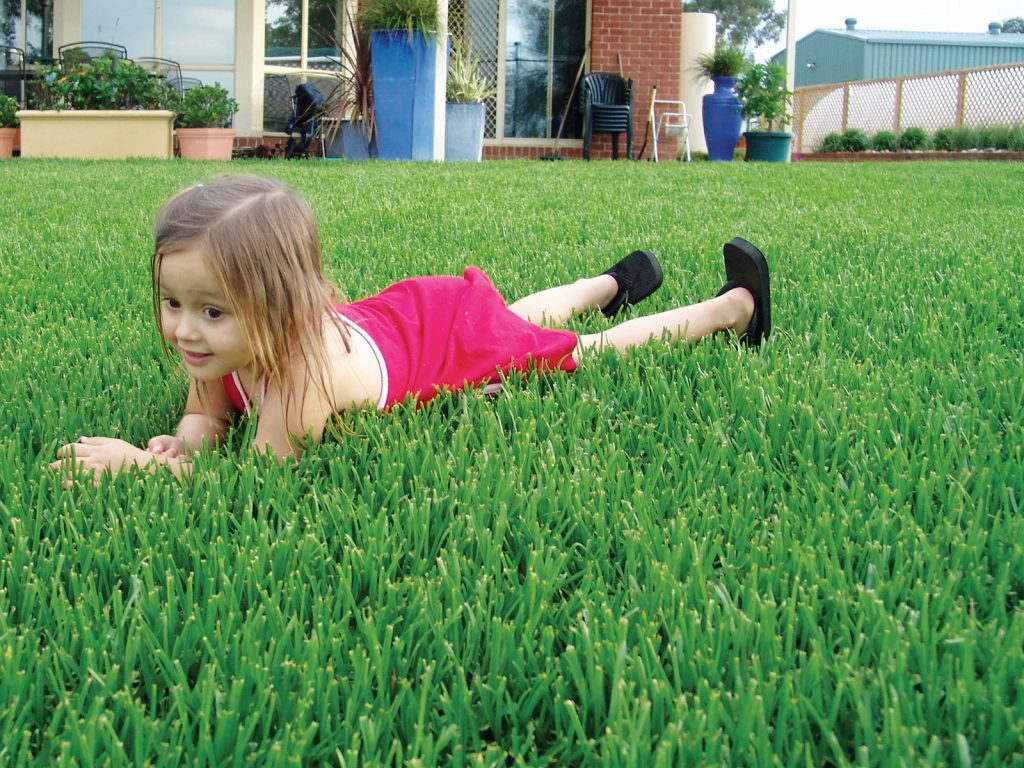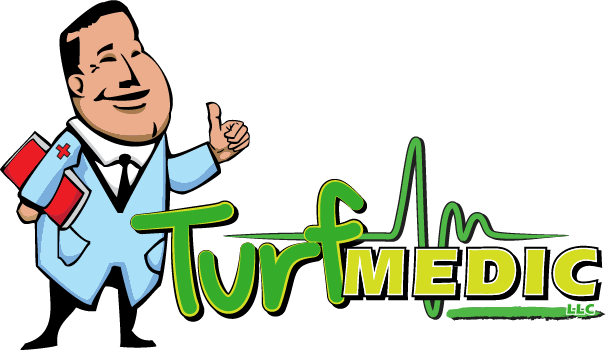You’re driving through your neighborhood on a Saturday morning, and you can’t help but notice how some lawns look like they belong on a golf course while others… well, let’s just say they’ve seen better days. Maybe your own lawn falls into that second category, despite all the time and money you’ve spent trying to get it right. Here in Maryland, we face unique challenges that many homeowners don’t fully understand. We’re sitting right in what lawn care professionals call the transition zone – that tricky area where it’s too hot for some grasses and too cold for others.
The truth is, choosing the wrong grass type is one of the biggest reasons why Maryland lawns struggle year after year. You might have the best intentions, but if you’re working with grass that wasn’t meant to thrive in our climate, you’re fighting an uphill battle from day one.
In this guide, we’re going to walk through the best grass options for Maryland lawns and give you the knowledge to make a decision that’ll have your neighbors asking for your secret.
Understanding Maryland’s Climate and Growing Conditions
Maryland’s weather can feel like it has a personality disorder sometimes. One week we’re dealing with humid 90-degree days, and the next we’re scraping ice off our windshields. We live in what’s called the transition zone, which means we get summers that are too hot for cool-season grasses and winters that are too cold for warm-season grasses to survive reliably.
The soil around Greencastle and the surrounding Pennsylvania-Maryland border region tends to be clay-heavy in many areas. Clay soil holds water but doesn’t drain well, so when we get heavy rains, that water sits there and grass roots start to rot. Then there’s our temperature swings – 100-degree heat indexes in summer followed by winters where the ground freezes solid for weeks.
Understanding these conditions explains why your neighbor’s lawn might thrive with a grass type that leaves your yard looking patchy and stressed.

Top Cool-Season Grasses for Maryland Lawns
Cool-season grasses are the workhorses of Maryland lawns. These varieties love spring and fall weather, tolerate our winters, and do their best to survive our summers. Here are the three main options:
- Tall Fescue – This is the most popular choice for Maryland homeowners. This grass has roots that can grow three feet deep, which means when everyone else’s lawn is turning brown during a summer dry spell, tall fescue is still reaching down to find moisture. The newer varieties have narrower blades that feel softer and look more attractive than the old coarse versions.
- Fine Fescue – This is the low-maintenance option that works well in shady areas where other grasses struggle. It doesn’t need much water, doesn’t require frequent fertilization, and prefers not to be mowed as often. The downside is that it doesn’t handle heavy foot traffic well, so it’s not great if you’ve got kids constantly running around the yard.
- Kentucky Bluegrass – This creates that dense, carpet-like appearance that feels amazing under bare feet. The color is deep green and photographs beautifully. However, it’s also the highest maintenance option – it needs consistent watering, regular fertilization, and often goes dormant and turns brown during Maryland’s hot summers.
Warm-Season Options for Maryland
Zoysia Grass is the most viable warm-season option for Maryland. It’s incredibly tough and can handle kids playing football on it, dogs running around, and still bounce back looking good. Zoysia also has excellent heat and drought tolerance, staying green during those brutal July and August heat waves when cool-season grasses are struggling.
The catch with zoysia is that it’s slow to establish and expensive to install. It might take two full growing seasons to really fill in properly, and it goes completely dormant in winter, turning tan. Bermuda Grass is another option but really pushes the limits of what works reliably in Maryland – it doesn’t tolerate shade and can struggle with our cooler temperatures.

Grass Seed Mixtures vs. Single Varieties
Instead of putting all your eggs in one basket with a single grass type, many successful Maryland lawns use mixtures of different grasses. It’s like diversifying your investment portfolio – you’re spreading the risk and maximizing your chances of success across different conditions.
A typical Maryland grass mixture might combine tall fescue for drought tolerance, some Kentucky bluegrass for appearance, and maybe fine fescue for shady areas. This way, if one grass type struggles during a hot summer or cold winter, the others compensate and keep your lawn looking good.
The percentages in these mixtures matter too. A blend heavy on tall fescue will be more drought-tolerant but might not have the fine texture homeowners want. A mixture with more Kentucky bluegrass will look more attractive but require more water and maintenance.
Factors to Consider When Choosing Your Grass
Choosing the right grass isn’t just about picking the prettiest option. You need to think about your specific situation and what you’re trying to achieve:
- Sun and shade conditions – Walk around your yard at different times of day and pay attention to how much direct sunlight each area gets. That spot under the oak tree that only gets morning sun? Kentucky bluegrass will struggle there. Areas that get full sun all day can handle most grass types.
- Foot traffic tolerance – If you’ve got kids who use the backyard as their personal playground, or you regularly host outdoor gatherings, you need grass that can handle the wear. Tall fescue and zoysia are your champions here, while fine fescue will get worn down and create bare patches.
- Maintenance preferences – Think honestly about how much time you want to spend on lawn care. Some grasses require weekly attention during the growing season, while others are much more forgiving of a hands-off approach. There’s no shame in choosing lower-maintenance options if that fits your lifestyle better.
- Water requirements – This is becoming increasingly important as water costs rise and drought conditions become more common. Tall fescue can survive on rainfall alone in most years, while Kentucky bluegrass might need watering two or three times per week during dry periods.
Common Mistakes Maryland Homeowners Make
Over the years, we’ve seen the same mistakes repeated by well-meaning homeowners who just want a nice lawn. Understanding these common pitfalls can save you time, money, and frustration.
The biggest mistake is choosing grass based on appearance alone without considering whether it’s suited for your specific conditions. That picture-perfect Kentucky bluegrass lawn in the magazine looks amazing, but if you’ve got clay soil and don’t want to water constantly, you’re setting yourself up for disappointment.
Poor timing is another huge issue. Cool-season grasses like fescue and bluegrass should ideally be seeded in late summer or early fall when temperatures are cooling down but the soil is still warm. Too many homeowners wait until spring and then wonder why their new grass struggles through the first summer. It’s like trying to train for a marathon by starting the week before the race.
Inadequate soil preparation might be the most expensive mistake of all. You can have the best grass seed in the world, but if you’re putting it on compacted clay soil with poor drainage, it’s not going to thrive. Proper soil preparation might seem like an extra expense upfront, but it’s the foundation that everything else builds on.
Professional Installation vs. DIY Seeding
There’s definitely a time and place for do-it-yourself lawn projects, but there’s also a point where calling in professionals makes more sense both financially and practically. Here’s how to decide which route is right for you:
- DIY makes sense when – You’ve got a small area to cover, your soil is in decent shape, and you have the time to monitor and maintain the new grass properly. The seed itself isn’t terribly expensive, and there’s satisfaction in doing the work yourself. But success depends on getting a lot of details right – proper seed selection, correct timing, adequate soil preparation, and consistent follow-up care.
- Professional installation is better when – You’re dealing with larger areas, challenging soil conditions, or if you’ve tried DIY approaches in the past without success. Professionals have access to commercial-grade equipment for soil preparation, they understand local growing conditions, and they can often get better results in less time. They also know the best timing for seeding and can handle soil preparation properly.
- Long-term cost considerations – Professional installation might cost more upfront, but if it results in a lawn that establishes properly and thrives for years, it could actually be less expensive than multiple DIY attempts that fail and need to be redone. Plus, most professional installations come with some type of guarantee or warranty that protects your investment, and many offer ongoing maintenance programs to keep your new grass healthy.
Conclusion
Choosing the best grass for Maryland lawns isn’t about finding one perfect variety that works for everyone. It’s about understanding your specific conditions – your soil, your sun and shade patterns, your maintenance preferences, and your family’s use of the yard – and then selecting grass types that will thrive in that environment.
For most Maryland homeowners, tall fescue or a mixture containing tall fescue is going to be the most reliable choice. It handles our climate extremes better than most options, doesn’t require intensive maintenance, and creates an attractive, durable lawn that can handle family life. If you prioritize appearance and don’t mind higher maintenance, Kentucky bluegrass can create that premium lawn look that really stands out in the neighborhood. For low-maintenance areas or spots with challenging growing conditions, fine fescue might be your solution.
The key is being honest about what you want from your lawn and what you’re willing to put into maintaining it. There’s no point in installing high-maintenance grass if you don’t have the time or inclination to care for it properly. Similarly, if having the most attractive lawn in the neighborhood is important to you, it’s worth investing in grass varieties and professional care that can deliver those results.
If you’re still unsure about the best grass choice for your specific situation, consider consulting with local Maryland lawn care services who understand our growing conditions and can evaluate your particular property. The investment in expert advice upfront can save you time and money while ensuring you get the results you’re looking for.

Recent Comments